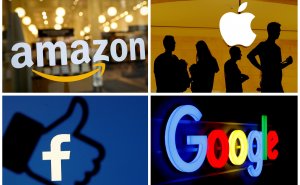Fools rush in to digital fads. iBeacons, augmented reality, QR codes and pop-ups were all supposed to light up our lives but really didn't. So brands should think carefully about the Internet of Things before diving in head-first.
If you follow technology trends then you already know that the mother of them all is hurtling toward us at Internet speed – as inevitable as it is awesome. It promises to change the life of every person on the planet, bringing trillions with it in created business value, and billions of newly connected network devices.
Indeed, the Internet of Things is finally coming. In fact, it’s already here. Not only has the term been around since 1999, and the first internet-connected refrigerator debuted in 2000, but now we’ve got connected, appliances, cars, watches, glasses and toasters, among other things.
"Entertaining at first, the novelty will wear off as all sorts of inanimate objects begin vying for our attention"
The early cases have been proven and now with increased processing power, cheaper sensors, (slowly) harmonizing standards, and support platforms in ready supply, companies are investing in earnest in the “next big thing” and the media has obligingly become increasingly excited.
We’re talking more than 5 billion earthlings connected to the Internet, and a staggering 50 billion “things”, by one reputable estimate. What kind of things? Well, thanks to low-cost, paper-thin, printable sensors, now pretty much every single thing in the world can be configured to trigger a networked experience.
You name it, water management systems, hospital beds, teddy bears, every appliance in your home, your car, your clothes, trees, your kids, sandwich wrappers, lager bottles, beer mats, airline tickets. If you can name it, it can probably be added to the Internet of Things.
The first mover disadvantage
And that’s not necessarily a good thing. While a lot has been said about society- and business- transforming potential of the Internet of Things, the history of digital technology over the past 20 years has shown that over-zealous first uses of emerging technologies by marketers have impeded, not enhanced progress:
The Web: Remember the mid 90’s, when most companies saw the Web as a great way to dump vast loads of content into corporate sites as electronic versions of print collateral (the infamous brochure-ware)?
But nobody cared much that AT&T had the most comprehensive informational website in the world – but they did care when they could start managing their account on it.
Not until online products & services (banking e-commerce, travel) become available to markets did they spark consumer interest sufficiently to drive greater public internet penetration. The adaption of smartphones and 3G offer a close parallel.
Online Advertising: How did media agencies deal with great promise of interactivity the web brought? By suggesting that squeezing print ads into 468 x 60 pixels would bring users in droves, and when click-through rates began their long tumble, suggesting that there was some latent brand lift in there.
That not working? Have the ads pop-up to interrupt whatever it is you’re doing, or – more recently – have them follow you around on every page you visit for a few weeks, creating a whole new type of negative brand experience.
Wearables: Google Glass – take all the features of an existing platform (the mobile phone), but put it on your face to ensure public ridicule and hostility, but not customer value.
iBeacons: When released in October 2013, this IoT technology for triggering indoor location based-experiences was widely heralded as the holy grail for enhancing in-store retail with helpful services that created greater bonds between customer and brand.
But the first deployments of the tech again were about bringing the old practice of simple in-store promotions to a new platform, making the tech largely redundant and without any discernible value to retailers or their customers. The result has been disappointingly low adaption rates.
Where digital innovation sits
The customer experience head of a major global financial services company recently made the point to me that one of the biggest problems with digital innovation was that companies hand over new technologies to marketing departments first instead of product development teams. This comment is particularly relevant when thinking about how your company leverages the Internet of Things.
While there will certainly be excellent marketing uses for this new tech, (see Nivea’s innovative and practical use of iBeacons in an ad), there is also the threat of, say, every single tub of Philadelphia Cream Cheese in the world becoming capable of triggering messages on your mobile phone just by merit of your proximity.
Perhaps interesting or entertaining at first, the novelty will wear off as all sorts of inanimate objects begin vying for our attention with offers for recipes, sweepstakes entries, BOGOFS and other promotions.
The big risk here is that a technology that’s supposed to do wonders for improving people’s lives has an equal capability to provide endless nuisance. [Sounds like a bad cartoon, a cacophony of overstimulation]
The IoT offers a blue-sky future of ubiquitous connectivity that leads to happier, healthier, more productive and just, well, better lives for everyone.
The first wave of internet connected products has already shed light on what’s possible: home automation from Nest, and whole slew of fitness products attached to internet-connected wearables (Nike+, FitBit, Jawbone etc.) that are serving to create the “connected body.”
Notice that these examples are not campaigns, but discrete products or services that use IoT technology to deliver better experiences.
As companies start thinking about their first steps into the IoT opportunity, they’ll be faced with many choices that impact their successes.
Among the first of these will be the decision to develop IoT campigns or IoT products/services. Those companies that begin with latter and gain valuable experience about how their brands can behave and what their products can mean in this new era will have leapfrogged the early missteps of applying old practices to transformative new technologies.
Thanks for signing up to Minutehack alerts.
Brilliant editorials heading your way soon.
Okay, Thanks!



